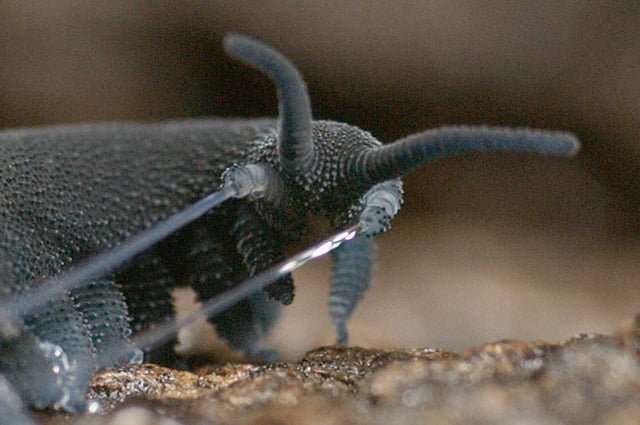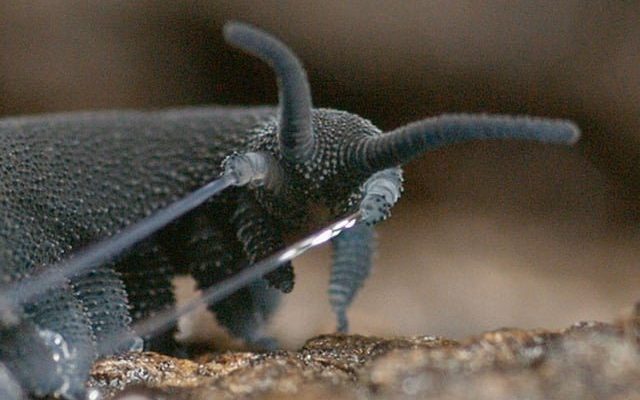
So, how do these slippery little predators find their meals without any lights? Let’s take a deep dive into the world of velvet worms and uncover their unique methods for detecting prey. Think of it like exploring a mystery novel, where every chapter reveals a new clue about their incredible survival tactics.
The Velvet Worm: A Quick Overview
Before we jump into how velvet worms track their prey, let’s take a moment to understand what they actually are. Velvet worms, or *Onychophora*, are soft-bodied, segmented creatures that resemble a cross between an earthworm and a caterpillar. They thrive in damp environments like rainforests and are known for their striking colors and velvety texture.
These creatures have been around for millions of years, making them one of the oldest living lineages on Earth. Their unique body structure includes limbs with claws and a pair of simple eyes, which gives them a distinct look. You might even think they look a little alien! But their looks are just the beginning. Their hunting skills will really surprise you.
How Velvet Worms Hunt at Night
Now, onto the good stuff! Velvet worms are primarily nocturnal hunters, meaning they do most of their work when the sun goes down. Their hunting strategy is pretty clever. Instead of depending solely on eyesight like many animals, they use a combination of sensing and tactile methods to locate their prey in the darkness.
Here’s how it works: velvet worms are equipped with chemoreceptors that help them detect chemicals released by potential prey. Think of it as having a built-in radar for scent. When something crosses their path, they can smell it long before they see it. This means they can efficiently hunt insects, snails, and other small creatures that they enjoy for dinner.
The Role of Sensory Hairs
One of the most fascinating features of velvet worms is the tiny, hair-like structures covering their bodies. These sensory hairs, known as *trichobothria*, play a crucial role in helping them navigate the dark. You can think of them like antennae that help pick up vibrations and air currents.
When a potential meal moves nearby, the vibrations are detected by these trichobothria. This lets the velvet worm know something is there, even when visibility is low or nonexistent. Here’s the thing: these hairs help the worm gather information about the size, speed, and direction of its prey, giving it the edge it needs to launch a successful attack.
How They Capture Their Prey
Once a velvet worm senses its prey, it’s time for action! These little hunters are well-equipped for a surprise attack. They secrete a sticky substance from specialized glands in their mouths, which they shoot out like a fast, sticky thread. This gooey silk can entangle and immobilize unsuspecting victims instantly.
Imagine if you had the ability to shoot a web from your fingers to trap a snack—pretty cool, right? This technique allows them to catch prey that’s often much quicker than they are. By immobilizing their target, velvet worms ensure their next meal is just a bite away.
Why This Matters in Nature
Understanding how velvet worms detect prey is not just about appreciating their unique hunting skills. It also highlights the delicate balance of ecosystems. These creatures are important predators in their environments, helping to control populations of insects and other small creatures.
Their presence in the ecosystem serves as a reminder of how interconnected nature is. Each species plays a role, and even the smallest ones, like velvet worms, can have a significant impact on their surroundings.
The Future of Velvet Worms
As we continue to learn more about velvet worms and their adaptations, scientists are also becoming concerned about their future. Habitat destruction and climate change pose serious threats to these ancient creatures. Preserving their habitats is crucial not only for the velvet worms but also for maintaining the biodiversity of our ecosystems.
By understanding their role in nature, we can advocate for their protection. This means supporting conservation efforts and encouraging sustainable practices that help keep their habitats safe from human impact.
Velvet worms are truly remarkable little creatures with fascinating ways of detecting prey in the dark. From their sensitive hairs to their clever hunting techniques, they showcase the wonders of evolution and adaptation.
By appreciating these unique hunters, we gain insight into the complexities of nature and the importance of every living being in our ecosystems. Next time you think about creatures in the dark, remember the velvet worm, silently stalking its prey, and the incredible survival strategies it employs. It’s a little reminder of the mysteries that lie in the world around us—waiting to be discovered.

